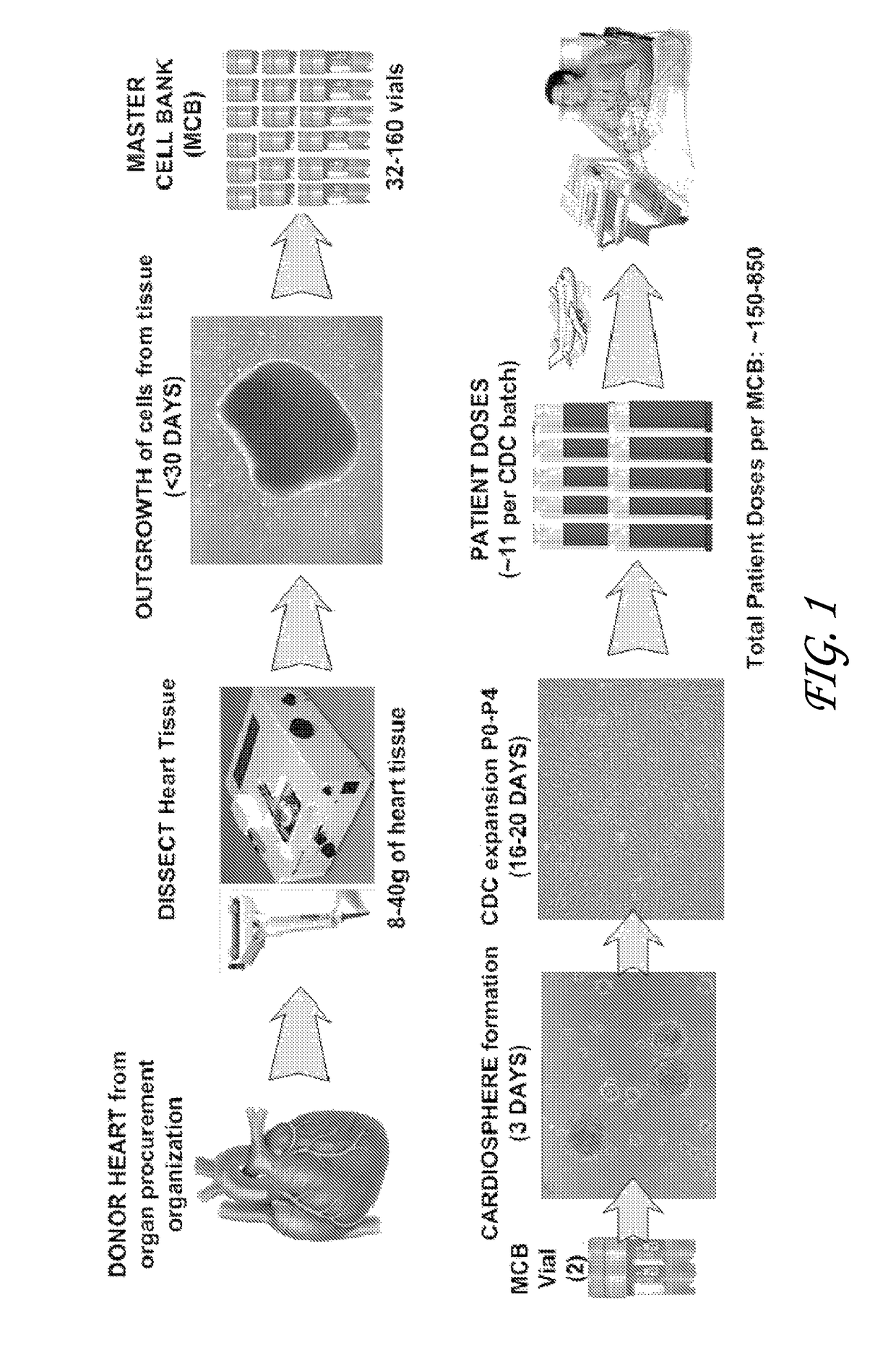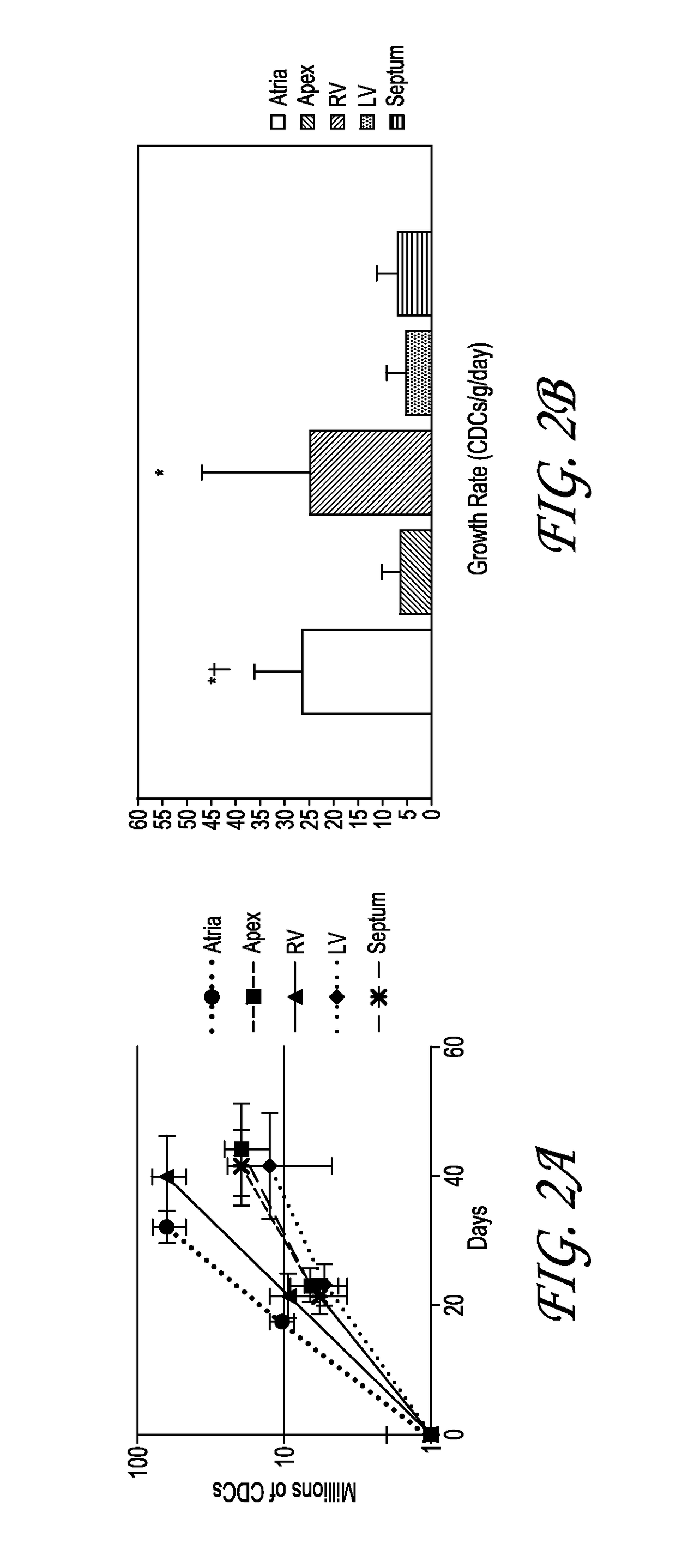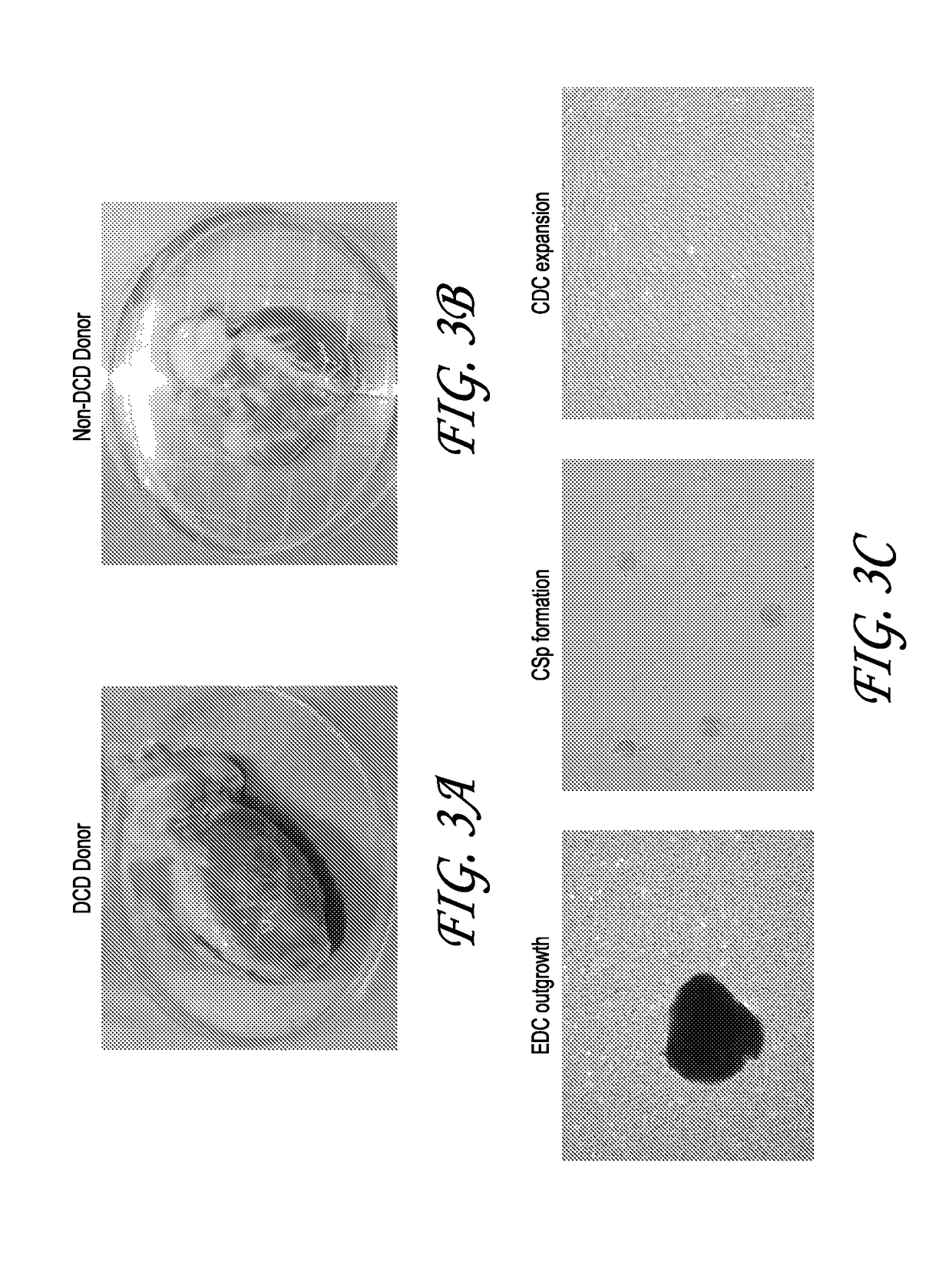Optimized methods for generation of cardiac stem cells from cardiac tissue and their use in cardiac therapy
a technology of stem cells and cardiac tissue, which is applied in the field of stem cell generation, can solve the problems of reducing the ultimate yield or quality of cdcs, reducing the risk of adverse side effects, and reducing so as to reduce the risk of contamination, reduce the perturbation of the explant, and reduce the risk of adverse side effects
- Summary
- Abstract
- Description
- Claims
- Application Information
AI Technical Summary
Benefits of technology
Problems solved by technology
Method used
Image
Examples
example 1
nt of Scale-Up Allogeneic Manufacturing
[0073]Cardiosphere have previously been harvested from percutaneous endomyocardial biopsies (e.g., those obtained from humans or pigs) as an autologous source tissue. In some cases, an allogeneic stem cell therapy approach may be preferable. The present study tested the ability to successfully scale-up production of cardiac stem cells (e.g., cardiospheres or CDCs from test allogeneic whole hearts collected from organ donors. Two human hearts were obtained for research purposes (one from a donor after cardiac death [DCD]). Hearts were subjected to established manufacturing processes for autologous CDCs and the resulting products characterized with respect to growth and phenotypic identity. The effects of tissue storage and tissue sampling from various regions of the heart were examined. Comparative methods as disclosed herein were developed to allow for process scale-up. Additionally, pig CDCs were manufactured for a preclinical study from two p...
example 2
ization of Explant-Derived Cells and Cardiosphere-Derived Cells
[0102]The following experiments were performed to more fully characterize the CDCs generated by the optimized production methods disclosed herein, as well as the characteristics of selected intermediate cells, namely, explant derived cells (EDCs), which are the first cell population that is collected from the cultured tissue explant. The characterization provides more detailed understanding of the effects of the methods used to generate cardiospheres and / or CDCs on the resultant genotype and / or phenotype of the generated cardiospheres and / or CDC's. Additionally, the characterization of explant derived cells (EDCs) allows a more full understanding of the effects of the production methods by providing data on the genotype and / or phenotype of intermediate cells in the production process. Moreover, the characterization of the cells at various stages in the production process enables, according to several embodiments, a tailo...
PUM
| Property | Measurement | Unit |
|---|---|---|
| surface area | aaaaa | aaaaa |
| diameter | aaaaa | aaaaa |
| inner diameter | aaaaa | aaaaa |
Abstract
Description
Claims
Application Information
 Login to View More
Login to View More - R&D
- Intellectual Property
- Life Sciences
- Materials
- Tech Scout
- Unparalleled Data Quality
- Higher Quality Content
- 60% Fewer Hallucinations
Browse by: Latest US Patents, China's latest patents, Technical Efficacy Thesaurus, Application Domain, Technology Topic, Popular Technical Reports.
© 2025 PatSnap. All rights reserved.Legal|Privacy policy|Modern Slavery Act Transparency Statement|Sitemap|About US| Contact US: help@patsnap.com



